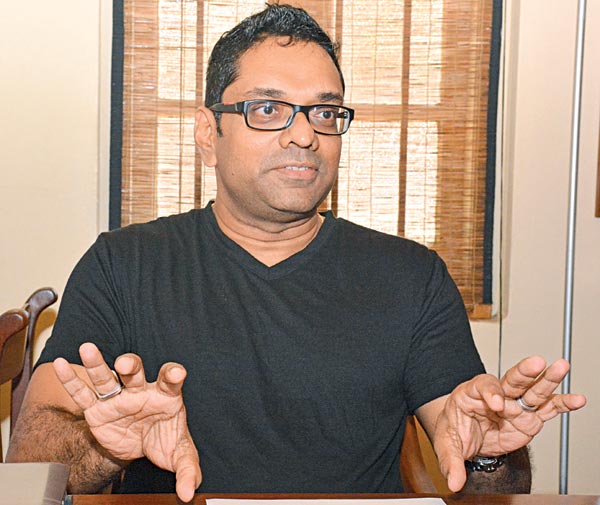Architecture has a lot to do with formality and procedure. In addition to building it is this understanding of formality that is essential. History is also part of this formality. Arch World features Architect Sadev Wittachy who put the relationship between history and formality into perspective.
“Look at Colombo of course, some of it is disorganized. Most of our streets are disorganized. The street elevations are so haphazard. Though we have all these regulations, it is not implemented properly. Regulation wise, there are regulations such as there being a minimum Plot size and a maximum buildable area and there are FARs (Floor area ratios),” said Wittachy
 So all those regulations are there. The Urban Development Authority regulations are there. It is only that people do not follow the proper stream. Even in approvals people deviate and get about doing their own things.
So all those regulations are there. The Urban Development Authority regulations are there. It is only that people do not follow the proper stream. Even in approvals people deviate and get about doing their own things.
“In Sri Lanka, architecture is very regularized by the Sri Lanka Institute of Architects incorporated under an act of parliament. They control the teaching of architecture and practising of architects. Everything is governed by the Sri Lanka Institute of Architects. Likewise in India, it is the Indian Institute of Architects. But I think we are stronger,” stated Wittachy
Dutch and Portuguese influence
Most of the schools have been following the Royal Institute of British Architects syllabus. Both the schools in Sri Lanka are accredited by the Royal Institute of British Architects (Royal Institute of British Architects). It is sort of regularized and formalized.
“When it comes to practising of Architecture, Singapore and Malaysia are more similar to Sri Lanka. Our architectural education system is based on the British System. Even though we were colonized by the Portuguese and the Dutch (at that time the education system was not formalized) it was the British who really put things in place. We are very much influenced by the British System,” pointed out Wittachy.
The Dutch and the Portuguese have influences on buildings and furniture, but if you go to Holland you won’t get architecture like what we have here, because everything has been localized.
“In Galle, there are strong influences of Portuguese and Dutch.But what we get here you would not get in Holland or Portugal. Because in Sri Lanka it is localized. There, you would not get similar buildings. So what we have is a very local unique style. It evolved with the local influence. However some of the buildings in Fort you could find in London. Whereas the Dutch ones are diluted. The British had a very strong influence on us,” explained Wittachy. Because of the civil war in Sri Lanka much of the architecture was completely destroyed.
Differences
“When rebuilding they should study the old architecture which existed there - the traditional Jaffna house with the courtyards. So may be they should modernize on those lines. Whatever we do must be done on the same lines. There is a major difference between Jaffna architecture and Colombo Architecture when it comes to housing.
 In the traditional Sinhala house there is a verandah, an internal room like a living dining room with two rooms on either side. There is a different version in Jaffna. There is a similarity, but a different and strong identity as well - the columns are different,” elucidated Wittachy.
In the traditional Sinhala house there is a verandah, an internal room like a living dining room with two rooms on either side. There is a different version in Jaffna. There is a similarity, but a different and strong identity as well - the columns are different,” elucidated Wittachy.
There is a book called ‘Architecture of an island’ written by Ronald Lewcock. All those buildings now destroyed have been recorded there. That is a good source to go back.
“When designing in the tropics, you have to think of the rain, the sun and the humidity and that is it. You cultivate a sense of peace in your designs by keeping it as simple as possible, less decoration, simple spaces and clean spaces.
I like doing interiors for buildings - in Gangaramaya we did a nice gallery which was photographic images of Buddhist art from the classical period to modern period. So that was interesting. I did another house in Battaramulla for an Indian couple. And they are very happy with the house,” added Wittachy.
Light and shadows
To Wittachy an interior should be something that is pleasing. You should not be overpowered by an interior, you should be at ease and comfortable. “Light and shadows are very important. You can change the entire feel of a space through light and shadows. How the shadows fall and how space changes during different times of the day can be influenced. It is a form of magic - these light and shadows. Bawa has really mastered the light and shadow movements. You have to have experience to master the manipulation of light and shadows. If you are sensitive enough you can capture it,” summed up Wittachy
 Basically as an architect you respond to a certain set of problems or requirements - the client’s requirements and the site requirements.
Basically as an architect you respond to a certain set of problems or requirements - the client’s requirements and the site requirements.
There is no hard and fast rule as such. However talent is important. You need to have a knack for it, you have to like it. Certain people are not geared for it.
Pictures by Sarath Peiris



Add new comment